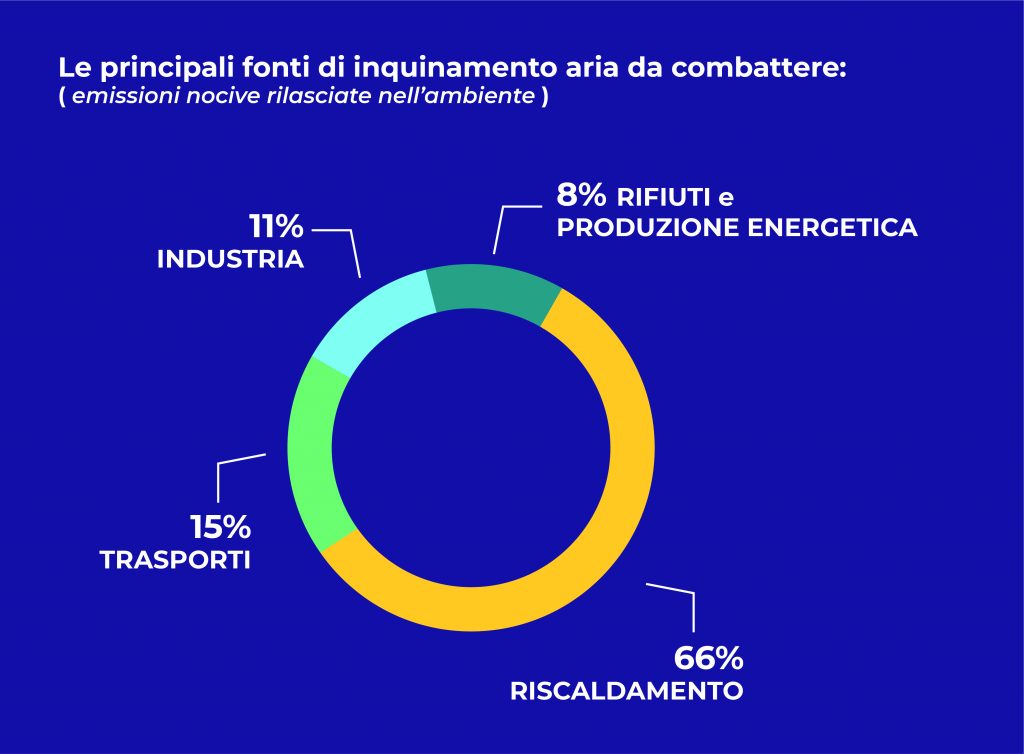Europe has long been active in reducing global pollution and Zero Pollution is the latest challenge launched by the European Commission in the context of the European Green Deal. But what exactly does “zero pollution” mean ? The answer can be found in the EEA – European Environment Agency’s report published on 15 October 2020, which examines this challenge from different angles, explaining all the ways in which we can minimise the current rate of pollution as much as possible and how to prevent it in the future through the measures in the Green Deal.
The report, EEA Signals 2020 – Towards zero pollution in Europe, gives a detailed overview of air, soil and water pollution, examining the different types of pollution and their sources. The aim is, first and foremost, to improve the quality of these three elements, with positive effects on people’s health: pollution is still a widespread and, unfortunately, expanding problem. Earlier this month, therefore, the European Commission unveiled the roadmap for an effective action plan to achieve this ambitious goal. Zero pollution, according to this plan, will only be achieved through better prevention, combined with monitoring and direct action to reduce pollution.
The main sources of air pollution to target are:

– Heating (domestic and commercial use) is responsible for 66% of harmful air emissions in Europe
– Transport is responsible for 15% of Europe’s harmful air emissions
– Industry is responsible for 11% of Europe’s harmful air emissions
– Other sources, including waste and energy production from non-renewable sources, are responsible for 8% of Europe’s harmful air emissions
How to win this challenge
The ambitious Zero Pollution for Europe project was announced as part of the European Green Deal, the EU’s strategy to implement the agenda of sustainable development goals. The main aim is to protect residents and the ecosystem through better monitoring, further reducing harmful pollution levels while strengthening the EU’s resilience and strategic autonomy. Specifically, action will be taken by promoting adequate and timely information on the health and economic benefits of reduced pollution, exploring the further development of business practices that reduce pollution, creating job opportunities and reducing social inequality (as pollution disproportionately affects the most vulnerable people) and finally helping to complement the sustainability measures already in place.
In addition, the action plan also includes incentives for an increasingly circular economy, the strategy to safeguard biodiversity and the Farm to Fork strategy. The chemical sustainability strategy and the zero pollution action plan, due to be published in 2021, will help promote cleaner products and technologies in all relevant economic sectors, prioritising the prevention of pollution over remediation. Following an open public consultation, the pollution action plan is slated to be rolled out in the first half of 2021. The priorities also include implementing existing (and new) legislation on the revision of key pollution control instruments and creating an integrated monitoring and zero pollution perspective framework. The European Environment Agency will be a key partner in these activities: the report presents an overview of industrial pollution trends and the impact of synthetic chemicals on the environment, as well as environmental noise, which increasingly threatens European health.
“The lofty goal of the Zero Pollution Ambition for air, water and soil is to recreate a healthier planet for healthier people.”
Win-win solutions for cleaner cities
In collaboration with the EEA, ten European cities have recently launched a pilot project to gain the best possible understanding of how to improve air quality locally and achieve the Zero Pollution objectives. The cities participating in the pilot project have, for example, expanded district heating, promotedcycling, lowered speed limits for cars and other vehicles and introduced taxes on vehicles entering city centres to improve local air quality. Other successful initiatives include the relocation of industrial facilities to areas outside cities and, for private homes or office buildings, the upgrading of stoves and boilers, encouraging the use of cleaner fuels for domestic heating. Another example is the introduction of electric vehicles such as taxis and other low-emission urban transport vehicles (e.g., buses and trams). These measures not only mitigate local air pollution, but also reduce noise, improving the quality of life. Moreover, they reduce greenhouse gas emissions and, in many cases, save money.
However, authorities in the cities themselves have pointed out that, despite the obvious benefits of these ecological measures, they face significant difficulties in raising residents’ awareness and encouraging them to accept these changes. To achieve the best possible results, local and regional actions must therefore go hand in hand with effective national and EU policies, which often offer substantial co-benefits in simultaneously reducing emissions and contributing to public awareness campaigns. These co-benefits can be achieved, for example, by improving energy efficiency and making urban mobility systems greener by involving residents to a greater extent.



